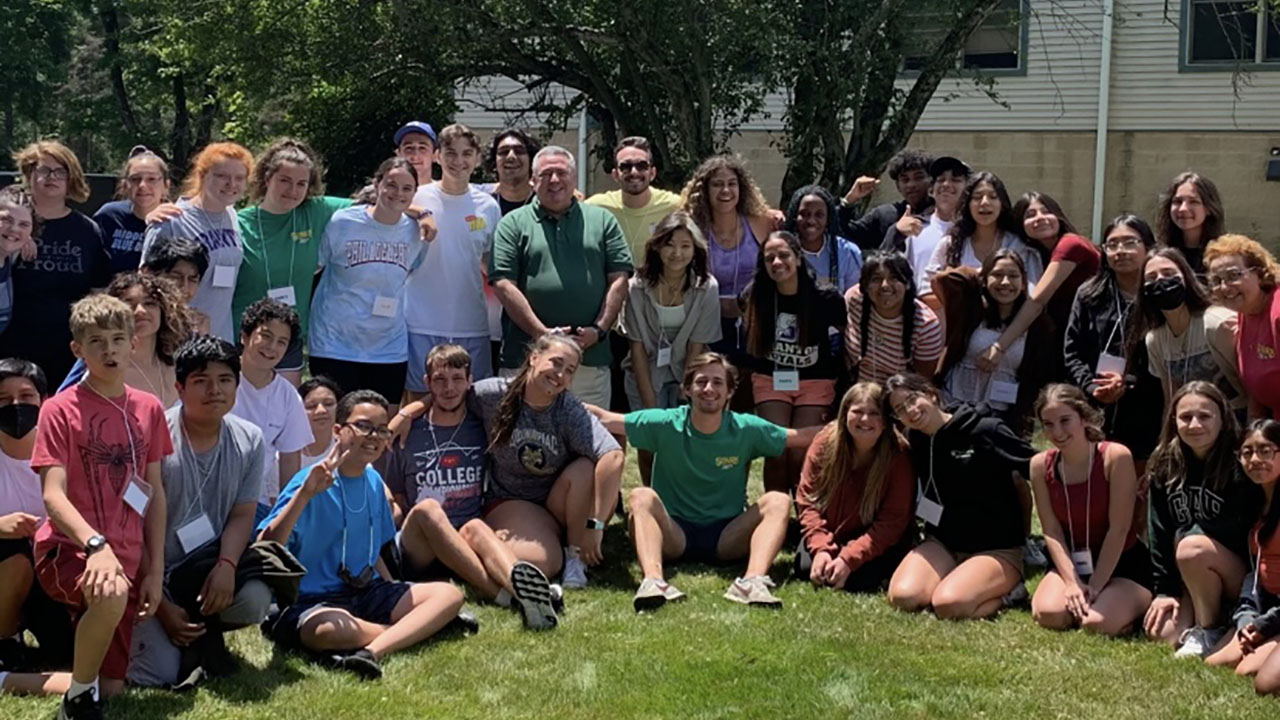Summer Spotlight: SPARK Program

Kathleen Wallace '23, Kaitlyn Franceschelli '23, and Nicholas Gershey '23 served as team leaders at a weeklong program at at our Chapman Lake Retreat Center called SPARK, which is designed to support at-risk youth between the ages of 12-15.
Here, they answer questions as a group about their experiences.
What are the goals of the SPARK program?
SPARK is a weeklong program hosted at Chapman Lake for local youth ages 12-15. SPARK educates kids on various important topics such as self-worth, healthy lifestyle, healthy and unhealthy relationships, and bullying. During the week, University and Scranton Preparatory School volunteers are focused on listening to and encouraging each SPARK participant so they feel valued.
Who took part in the SPARK program?
The SPARK program was born as a collaborative effort between The University of Scranton and Scranton Preparatory School. This year, 13 University students, 12 Scranton Preparatory students, two additional volunteers, SPARK alumni, Prep staff, and the University’s CSSJ staff all came together to make SPARK possible for the 23 SPARK participants.
Describe a typical day of SPARK.
A typical day starts off with the team awaiting the arrival of the kids around 9 a.m. After breakfast is served, the patented SPARK dance offers a boost of energy. Next, each small group heads to a station with activities designed by team members to coincide with the day's theme. For instance, during the topic of bullying, an activity can revolve around identifying and constructively dealing with bullying. Five stations total lasting about 20-25 minutes each.
Lunch is followed by free time to jump into the lake (lifeguard supervised), play volleyball, create arts and crafts, and more. Small groups then return to stations for activities on another theme.
After dinner, at 5 p.m., kids leave the lake and team members prepare the Retreat Center for the next day. The day ends with reflection and a review of upcoming activities.
How did you use the Chapman Lake Retreat Center to conduct the program?
We utilized almost all of the Retreat Center to conduct this program. Each activity took place at one of five locations: the lake room, the porch, the tent, the large/small group room, or the dining room. Meals were served in the dining room, but everyone ate under the tent outside. During free time, campers might play piano or Just Dance in the lake room, or go outdoors for swimming and volleyball. At night, the chapel was used for reflection.
What do you think is the community impact of running a program like this?
This program can only be of benefit for the greater Scranton community. Many of the kids have talents or personality traits that they’ve hidden from others prior to SPARK. Through encouragement by the team members and other kids, they learn how to outwardly express themselves and better those around them. It is the empowerment of youth, giving them the tools, confidence, and knowledge necessary to make a change for the better.
What do you think the teens got out of SPARK?
Our hope is that all SPARK participants leave the week knowing their worth, appreciating the importance of their gifts and talents, and understanding they are cared for and loved by all at SPARK. At the end of every SPARK, we invite the kids to share about the week. This year, one teen shared that they saw their SPARK leaders as role models, and another expressed that they had felt listened to and loved at SPARK. The growth they undergo during this week shines through.
How does it feel to participate?
From the team's perspective, one overwhelming feeling stays with us long after SPARK: gratitude. We are extremely humbled and grateful to meet such inspiring, intelligent, and incredibly powerful young people.
We learn immensely from them and are renewed by their positivity, energy, and loyalty to one another.
How does this connect to the university's Jesuit ideals of service and 'being men and women for others'?
A friend once shared that at the core of what it means to be Jesuit educated is the question of how we can love one another best. Both our team and our participants possess different strengths and gifts, and watching each of them use those to love is the whole point. We see the kids look out for, respect, and affirm one another and our team and we do the same for them and each other.
Each year the team and participants show trust, honesty, care, and above all, love to one another. They choose to be all-in with each other and for each other, even as strangers. It’s beautiful and impossible to describe. What happens at Chapman Lake during the week of SPARK is magical, and precisely the definition of being “men and women for and with others."






